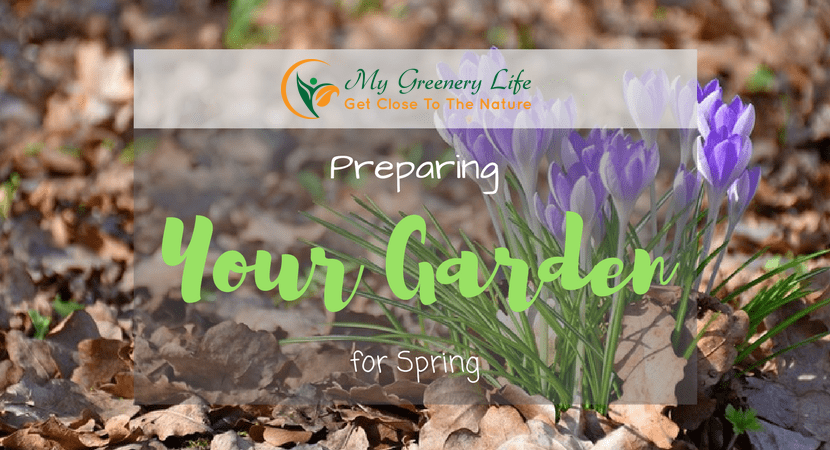Though it’s possible to head out on the first day of spring and enjoy your garden, it’s unlikely that it will be looking it’s best. After a cold and wet winter, most gardens will need a little bit of preparation before being ready for Spring. Preparing your garden for spring doesn’t need to be costly or time consuming. In fact, a few small tasks and a little bit of organising is usually enough. Here are some tips from YardCareGurus.com of the top things to do:
How to Prepare Your Garden for Spring
Have a General Tidy Up
Having a general tidy up is an important part of preparing your garden for spring, especially as the chances are the garden will have been left alone a lot during the winter. By removing all leaves and debris from pots, containers, lawns and flower beds you will have a garden that’s clean, tidy and ready for spring gardening to begin.
Regularly tidying up will make your job so much easier when the warner months arrive. A quick 10 minutes every few days to make sure there’s no extra leaves building up or other litter etc can save a lot of time when the real gardening months arrive.
Clean All Gardening Tools
Though it may seem pointless to clean gardening tools are they’re only going to get dirty again anyway, it’s an important part of preparing your garden for spring. Cleaning tools helps to preserve them for longer, prevents the spread of harmful plant diseases and removes any unwanted pests. You may also consider sharpening any tools that need sharpening, as a way to make them more effective.

“A gardener is only as good as his tools” may not be 100% accurate but it’s always best to have your tools in great working condition. It’s no use digging with a rusty shovel or using blunt shears. Make sure to keep your tools dry over the winter to avoid any unnecessary rust forming.
Ensure Your Soil Is Ready for Planting
With spring comes a great deal of new planting, so it’s important that your soil is ready. Remove all weeds, layer on fresh compost and add any nutrients that are needed. It’s best to do this a few weeks before you plan to start any spring planting, as this gives enough time for the new soil to mix with the old.
Ask your local gardening center for advice on soil types and best practices for timing and temperature to make sure you have the right soil for your spring garden project. The right soil can make a huge difference.
Add a Water Butt
When you’re preparing your garden for spring it’s a good idea to add a water butt, if you don’t already have one. A water butt will collect the rainfall that often comes with springtime, which can then be used on plants and lawns. This cuts down on the amount of water that’s being used by your home and it’s better for the environment.
Remove All Garden Pests
Garden pests are likely to have found a home during the winter and so they should be removed in time for spring; slugs, snails and other creatures can all be found sheltering in plants during the colder months. Pests can cause damage to plants and roots, so it’s best to get rid of them.

You can find many quality products at your local gardening centre that not only help get rid of pests but can also prevent future infestations from occurring. You don’t want all your hard work ruined by some nasty bugs.
Fix Fences and Sheds
Any wooden structures in the garden are at risk of being affected by the winter weather. Cold temperatures, frost, rain and wind can all cause damage. Before spring rolls around, take the time to repair anything that needs repairing; this will ensure all fences and sheds are ready for when you want to use the garden again.
A good quality wood paint can make a massive difference to the longevity of your wooden fence or shed as this helps to protects from the harsh weather. Ronseal have a great range so check your local gardening store or ask your local store for help on choosing.
As a gardener, it’s beneficial for you to prepare your garden for spring. Not only does it ensure everything is ready for spring planting, but it also ensures that the entire gardening experience is an enjoyable one. After all, doesn’t everyone want to garden somewhere that’s been giving a little bit of TLC?
Last Updated on


Reply